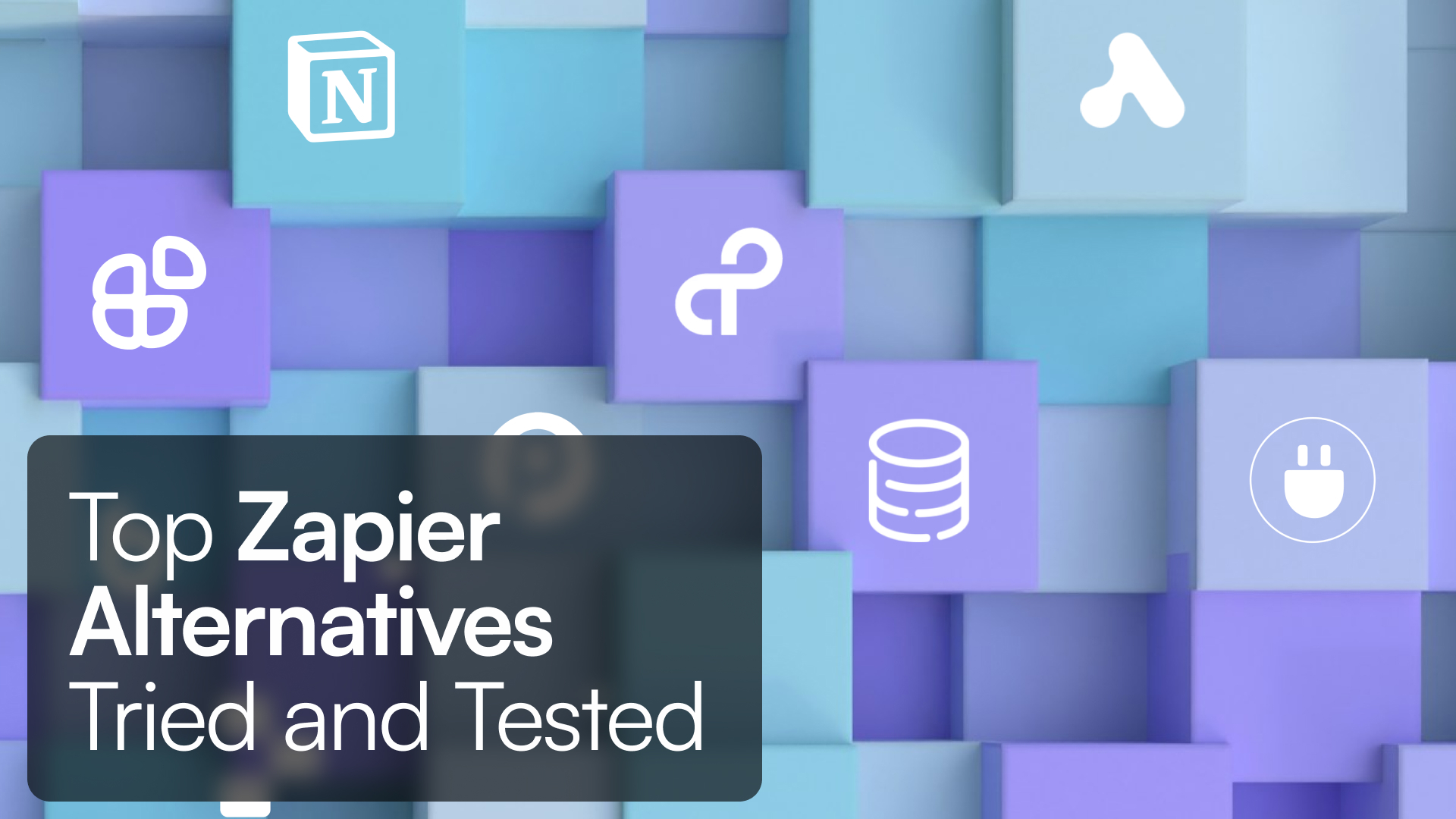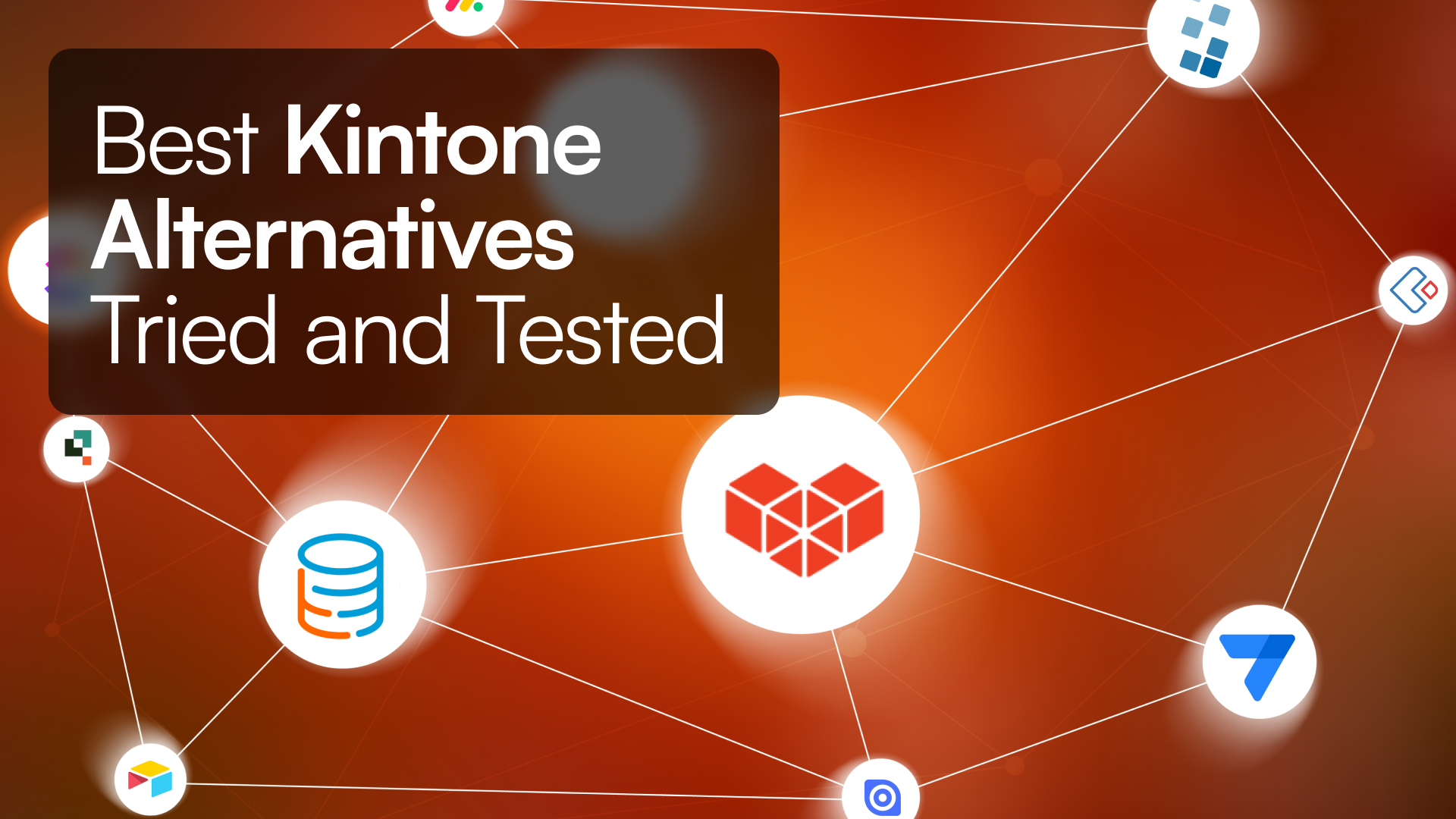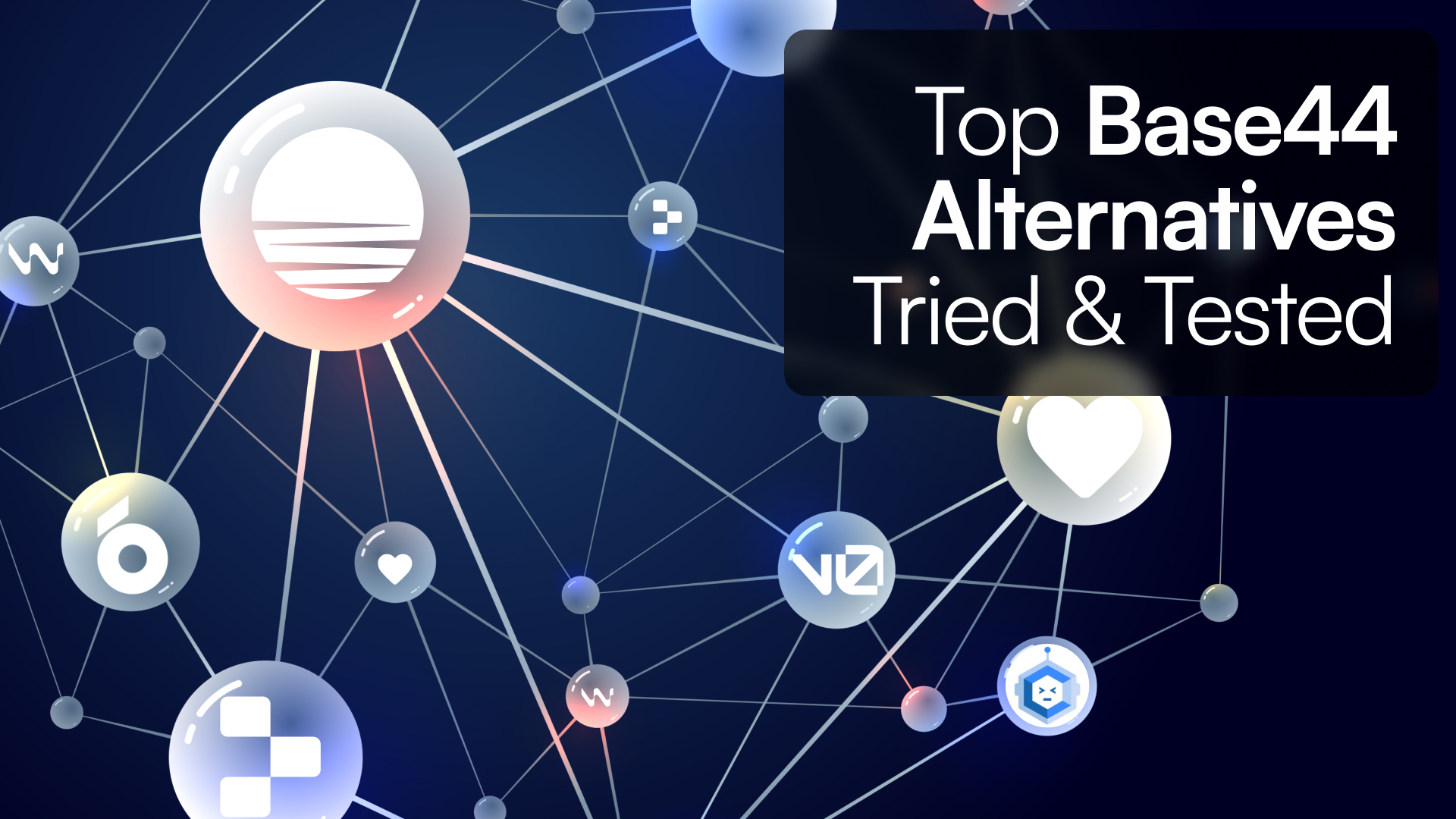Ready to burst the Bubble? Explore 10 no-code platforms that go beyond.
Introduction
Building web applications without writing traditional code has enabled businesses and individuals to bring their ideas to life quickly and efficiently. While Bubble.io is a popular choice in the no-code space, it may not meet every project's unique requirements. Whether you're looking for a platform with greater scalability, more customization options, or enhanced security features, exploring other alternatives can help you find the right fit.
In this guide, we’ll cover the top 10 alternatives to Bubble.io for 2025, providing insights into each platform’s key features, and explaining why users are choosing options like Tadabase for their projects.
1. Tadabase
Best for: Businesses needing scalable, data-driven applications with advanced customization and enterprise-grade security.
Overview:
Tadabase empowers organizations to create highly customizable, scalable web applications without coding. It's built to handle complex data structures, large-scale operations, and provides robust security—making it perfect for businesses with demanding needs like those in healthcare, logistics, and finance.
Key Features:
- Scalability: Easily manage large datasets and high user volumes without sacrificing performance.
- Advanced Customization: Deep customization options for building applications that align with specific workflows.
- Enterprise-Grade Security: Features include HIPAA compliance, SSL encryption, and detailed access controls, ensuring your data is secure.
- Seamless Integrations: Connect with popular tools like Zapier, Slack, and Google Workspace to streamline your operations.
- User-Friendly Interface: An intuitive platform that even non-technical users can navigate easily.
Insights:
Tadabase is particularly well-suited for industries requiring advanced security and scalability. Its ability to handle intricate data makes it a favorite for companies in healthcare, enterprise, and logistics, where data integrity and performance are critical.
Why Users Switch from Bubble.io to Tadabase:
- Scalability: Tadabase is designed to scale without performance issues, unlike Bubble.io, which struggles as data and user volume increases.
- Customization: Tadabase allows for deeper, more comprehensive customization, whereas Bubble.io often requires third-party plugins.
- Security: Tadabase includes enterprise-level security features, including HIPAA compliance, while Bubble.io lacks certifications necessary for industries like healthcare.
- User Experience: The learning curve in Tadabase is smoother, supported by strong customer service.
Try Tadabase for Free Today – Scalable, secure, and fully customizable.
2. Webflow
Best for: Designers and marketers focusing on creating visually stunning, responsive websites.
Overview:
Webflow merges design and development into one platform, allowing users to create professional-grade websites with complete control over the design and front-end development process.
Key Features:
- Visual Design Freedom: Full control over design elements without the need for code.
- Built-in CMS: A powerful content management system ideal for dynamic content like blogs, portfolios, and e-commerce sites.
- Responsive Design: Webflow automatically adapts your design to fit all screen sizes, ensuring a flawless user experience across devices.
- SEO Optimization: Integrated tools for optimizing your site’s SEO.
- Animations and Interactions: Build engaging user experiences with custom animations and interactions.
Insights:
Webflow shines for those who prioritize design and user experience. It is ideal for marketing sites, landing pages, and content-driven platforms where first impressions matter.
3. Adalo
Best for: Creating native mobile apps with a focus on user experience.
Overview:
Adalo simplifies mobile app development, enabling users to design and publish apps for both iOS and Android without coding. Its drag-and-drop interface and component marketplace make it accessible for quick mobile development.
Key Features:
- Drag-and-Drop Builder: Visually create app screens and workflows without writing code.
- Native Mobile App Publishing: Publish apps directly to the Apple App Store and Google Play Store.
- Component Marketplace: Extend app functionality with pre-built components.
- Integrated Database: Manage your app’s data with Adalo's built-in database.
Insights:
Adalo is perfect for startups and small businesses looking to enter the mobile market without needing a full development team. Its simplicity allows for rapid app deployment, making it great for MVPs and prototypes.
4. AppGyver
Best for: Building complex apps with intricate logic and cross-platform deployment.
Overview:
AppGyver provides a powerful platform for building both web and mobile apps, focusing on complex logic and high customization.
Key Features:
- Visual Logic Editor: Design complex app logic without any coding.
- Multi-Platform Support: Build apps for web, mobile, and desktop.
- Rich Component Library: Access a wide variety of UI components to speed up development.
- Performance Optimization: Tools to ensure your apps run smoothly, even as they grow in complexity.
Insights:
If your project requires advanced functionality and needs to be deployed across multiple platforms, AppGyver is a standout option.
5. Retool
Best for: Creating custom internal tools and dashboards.
Overview:
Retool specializes in helping businesses create powerful internal applications quickly, with a focus on data integration from external databases and APIs.
Key Features:
- Data Source Integration: Seamlessly connect your tools to various databases and APIs.
- Pre-Built Components: Drag-and-drop functionality allows for quick UI construction.
- Custom Code Support: Add custom JavaScript when necessary.
- User Permissions: Control access with detailed user permissions.
Insights:
Retool is ideal for teams needing fast, efficient internal tools, such as dashboards or CRM systems.
6. Glide
Best for: Quickly building simple mobile apps from Google Sheets data.
Overview:
Glide transforms data in Google Sheets into simple mobile apps, offering a quick way to build internal tools, prototypes, or event apps.
Key Features:
- Google Sheets Integration: Apps are updated in real-time as Google Sheets data changes.
- No-Code Builder: A straightforward, intuitive builder for creating mobile apps.
- Templates: Choose from a variety of pre-built templates to kickstart your app.
- Simple Sharing: Share your app via a link or publish it in app stores.
Insights:
Glide is excellent for teams needing quick solutions or internal tools that are easy to maintain.
7. AppSheet
Best for: Automating business processes with custom apps built from data sources.
Overview:
AppSheet, now part of Google Cloud, allows users to create web and mobile apps directly from spreadsheets and databases, focusing on workflow automation and business efficiency.
Key Features:
- Data Integration: Connect to a range of data sources, from Google Sheets to SQL databases.
- Workflow Automation: Set up automated workflows that can trigger tasks like sending emails or generating reports.
- Cross-Platform Deployment: Apps are available on both web and mobile platforms.
- Machine Learning Features: Build predictive models directly into your apps.
Insights:
AppSheet is perfect for businesses aiming to automate processes without needing deep coding expertise.
8. Mendix
Best for: Enterprises needing low-code, scalable applications.
Overview:
Mendix provides a low-code platform for building scalable applications, designed to support collaboration between business and IT teams.
Key Features:
- Low-Code Development: Visual modeling combined with the ability to add custom code.
- Collaboration Tools: Built-in collaboration features for better communication between teams.
- Scalability: Mendix handles large-scale applications efficiently.
- Cloud Deployment: Easily deploy your applications on a variety of cloud platforms.
Insights:
Mendix is suited for large enterprises that need both rapid development and the ability to scale their applications.
9. OutSystems
Best for: Rapid application development with enterprise-level features.
Overview:
OutSystems is a low-code platform that enables fast development and deployment, especially for enterprise applications.
Key Features:
- Full-Stack Development: Build both the front-end and back-end with ease.
- Integration Capabilities: Seamlessly integrate with existing systems and third-party services.
- DevOps Automation: Automate the deployment and lifecycle management of your apps.
- Performance Monitoring: Track your application’s performance with built-in monitoring tools.
Insights:
OutSystems is ideal for large organizations looking to rapidly develop applications while maintaining control over integrations and performance.
10. Backendless
Best for: Developers needing a backend-as-a-service platform with visual development tools.
Overview:
Backendless combines a visual app builder with a robust backend, simplifying the development of apps that require powerful backend functionality.
Key Features:
- Codeless Logic: Design backend logic visually, no coding required.
- Real-Time Database: Manage your app’s data with real-time synchronization.
- User Management: Built-in features for user authentication and role-based access.
- Push Notifications: Easily send notifications to your app’s users.
Insights:
Backendless is perfect for developers who need powerful backend features but want to avoid managing servers or writing complex backend code.
Frequently Asked Questions
1. What is the best alternative to Bubble.io for enterprise applications?
Top alternatives to Bubble.io for enterprise applications include Tadabase, Mendix, and OutSystems. Tadabase stands out for its advanced customization options, scalability to handle large datasets and user volumes, and enterprise-grade security with features like SSL encryption and HIPAA compliance. Mendix offers low-code development, making it easy to build scalable applications while fostering collaboration between business and IT teams. OutSystems provides rapid application development with enterprise-level integrations and performance monitoring, making it ideal for businesses that need fast deployment and robust security measures. These platforms offer the flexibility, security, and scalability necessary for enterprise-level applications.
2. Can I use these platforms if I have no coding experience?
Yes, many of these platforms are designed for users without coding experience. Platforms like Tadabase, Webflow, Adalo, Glide, and AppSheet offer intuitive interfaces with drag-and-drop builders. They provide visual editors and pre-built components, making app development accessible to non-technical users.
3. How do these platforms handle data security and compliance?
Data security and compliance are critical considerations:
- Tadabase: Offers enterprise-level security, including SSL encryption, role-based access control, and HIPAA compliance, suitable for handling sensitive data.
- OutSystems and Mendix: Provide robust security features and comply with various industry standards.
Always review each platform's security measures and certifications to ensure they meet your specific requirements and compliance standards.
4. Which platform is best for building mobile apps quickly?
- Adalo: Focuses on native mobile app development with a user-friendly interface, ideal for iOS and Android apps.
- Glide: Allows rapid creation of mobile apps from Google Sheets data, perfect for simple, data-driven apps.
- AppGyver: Offers advanced features for creating complex, cross-platform applications without code.
These platforms streamline the mobile app development process, making it accessible even for beginners.
5. What options are available for integrating with other tools and services?
Integration capabilities vary:
- Tadabase: Integrates with tools like Zapier, Slack, Google Workspace, and offers robust API access for custom integrations.
- Retool: Excels in connecting with databases and APIs, ideal for internal tools requiring data from multiple sources.
- OutSystems and Mendix: Provide extensive integration options with enterprise systems.
Ensure the platform supports the tools and services essential for your business processes.
6. Is it possible to migrate my application from Bubble.io to another platform?
Yes, migration is possible but requires careful planning:
- Tadabase: Offers tools and support to facilitate the migration process, including assistance with data migration and workflow rebuilding.
- Considerations: Map out your application's features, identify platform-specific elements, and adjust them to fit the new platform's capabilities.
A detailed migration plan helps ensure a smooth transition.
7. How do I choose the right platform for my project?
Consider the following factors:
- Project Complexity: Do you need advanced customization and complex workflows?
- Scalability Needs: Can the platform handle expected growth in data and users?
- Security Requirements: Does it meet industry-specific compliance standards?
- Integration Needs: Does it support necessary external tools or services?
- User Experience: Is the interface suitable for your team's technical abilities?
- Budget Constraints: Do the pricing models fit within your budget?
Analyzing these factors helps align the platform with your project's goals and long-term strategy.
8. Are there free or trial versions available for these platforms?
Yes, many platforms offer free trials or free tiers:
- Tadabase: Provides a trial period to explore its features.
- Glide, Adalo, and AppGyver: Offer free plans or trials.
Testing the platforms allows you to assess their capabilities before committing.
9. Can I build both web and mobile applications with these platforms?
Yes:
- AppGyver, Mendix, OutSystems: Support cross-platform development for web, mobile, and desktop.
- Tadabase: Specializes in web applications with responsive designs for mobile devices.
- Adalo and Glide: Focus on mobile app development but can produce web-accessible versions.
Choose based on your target audience and device preferences.
10. How important is customer support when choosing a platform?
Customer support is crucial:
- Responsive Support: Helps overcome challenges quickly.
- Tadabase: Offers dedicated support for setup, troubleshooting, and best practices.
- Mendix and OutSystems: Provide comprehensive support for complex needs.
Evaluate support availability, response times, and additional resources like documentation.
11. What is the learning curve like for these platforms?
Varies by platform:
- Easy to Learn: Glide and Adalo are intuitive and user-friendly.
- Moderate Learning Curve: Tadabase and Webflow require time to master advanced features.
- Steeper Learning Curve: AppGyver, Mendix, OutSystems demand more time, especially for complex applications.
Consider your team's technical proficiency and available time for learning.
12. Can I customize the user interface extensively with these platforms?
Yes:
- Webflow: Offers pixel-perfect design control for unique websites.
- Tadabase: Allows customization to match branding and user experience needs.
- OutSystems and Mendix: Provide advanced UI customization for enterprise applications.
Ensure the platform meets your UI customization requirements.
13. Do these platforms support collaboration among team members?
Yes:
- Tadabase: Supports multiple users with role-based access controls.
- Mendix and OutSystems: Designed for collaboration between business and IT teams.
- Retool: Allows team collaboration on internal tools.
Collaboration features streamline development and maintain alignment.
14. How do updates and maintenance work with no-code platforms?
- Automatic Updates: Platforms manage server maintenance, security patches, and feature updates.
- Focus on Development: You concentrate on building and improving your application.
- Regular Improvements: Benefit from new features without additional effort.
Understand update management to plan for long-term maintenance.
15. What if I outgrow the platform's capabilities?
Plan for growth:
- Scalability: Choose platforms like Tadabase that scale with your needs.
- Future-Proofing: Discuss long-term goals with the platform's support team.
- Migration Options: Consider platforms with open architectures for easier transitions.
Selecting a scalable platform saves time and resources in the long run.
16. What makes Tadabase a strong alternative to Bubble.io?
Tadabase offers:
- Scalability: Efficiently handles large datasets and user volumes.
- Advanced Customization: Deep customization for complex workflows.
- Enterprise-Grade Security: Robust features like HIPAA compliance and SSL encryption.
- Integration Capabilities: Seamless connections with various tools and services.
- User Experience: Intuitive interface and dedicated support.
These strengths make Tadabase a compelling choice for businesses seeking a robust alternative.
17. Which platform is best for creating visually stunning websites?
Webflow is ideal for:
- Pixel-Perfect Design: Full control without coding.
- Advanced Animations: Engaging user experiences.
- Built-In CMS: Effective content management.
- SEO Tools: Improved search engine visibility.
Perfect for designers and marketers focused on high-quality, responsive websites.
18. Can I build complex logic and workflows without coding?
Yes:
- Tadabase: Create complex workflows with visual builders and rules engines.
- AppGyver: Offers a visual logic editor for intricate app logic.
- Mendix and OutSystems: Provide low-code environments for complex applications.
These platforms enable sophisticated applications without traditional programming.
19. Are there limitations to what I can build with no-code platforms?
While powerful, there may be limitations:
- Customization Constraints: Highly specialized features might require custom development.
- Performance Considerations: Resource-intensive applications may face challenges.
- Vendor Lock-In: Moving away can be complex due to proprietary technologies.
Assess your needs and discuss potential limitations with the provider.
20. How do I get started with a no-code platform?
- Identify Requirements: Define your application's features and goals.
- Explore Platforms: Research options like Tadabase or Adalo.
- Utilize Trials: Test platforms through free trials or tiers.
- Access Resources: Use tutorials, documentation, and forums.
- Plan Development: Outline structure and workflows.
- Seek Support: Reach out for assistance and best practices.
Starting with a clear plan and leveraging resources sets you up for success.
Conclusion
Choosing the right no-code platform is crucial for developing scalable, secure, and efficient applications. While Bubble.io is a popular choice, alternatives like Tadabase offer greater scalability, security, and customization options, making them better suited for businesses with more complex requirements.
Evaluate your project's needs—whether it's scalability, mobile app development, or internal tool creation—and select the platform that best fits your goals. Try Tadabase for free to experience a solution tailored to growing businesses with demanding security and data needs.
Start Building with Tadabase Today
More Alternatives to Explore
If you're considering switching from other platforms beyond Bubble.io, we have detailed comparisons that can help guide your decision. Whether you're looking for more flexibility, customization, or scalability, check out these alternative pages to find the best platform for your needs:
- Quickbase Alternatives
- TrackVia Alternatives
- Caspio Alternatives
- Airtable Alternatives
- Knack Alternatives
- Custom Code Alternatives
- Spreadsheet Alternatives
- Off-the-Shelf Software Alternatives
- Best Spreadsheet Alternatives
Each comparison highlights the strengths of Tadabase and other no-code platforms, helping you make an informed choice for your business.







